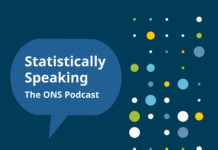Ahead of Kinship Care Week (2-6 October 2023), the Office for National Statistics (ONS) has produced insight into children living in “kinship care” households in England and Wales, based on data from the 2021 Census.
Children living in “kinship care” in this article refers to those aged 17 years and under on Census Day (21 March 2021) who lived without a parent present in their usual residence, but who lived with another adult, such as grandparent(s), older sibling(s), and/or other relatives. The analysis has been carried out on households of up to five people.
The analysis explores characteristics of children in kinship care, and their households, such age, ethnic group, religion, country of birth, health and disability, employment status of kinship carers and household deprivation.
We have included an Interactive map showing the geographical distribution of kinship care households down to local authority level as a proportion of households containing people under 18.
Commenting on the findings, Steve Smallwood from the Office for National Statistics (ONS) said:
“Today’s analysis using Census 2021 data provides valuable insight into care arrangements for thousands of young people in England and Wales who live with a relation other than their parent(s). As we mark Kinship Care Week, it’s striking how important grandparents are in providing care. In part, this is why many such households are characterised by people living there who are less likely to be employed and who are in poorer health than households where children live with their parent(s).”
Key findings from Census 2021
There were 121,000 children living in kinship care in households of five or fewer people in England and Wales at the time of the 2021 Census: 1.14% of all children aged 0-17 in the 2021 Census.
Who are the children living in kinship care households?
- Children living in kinship care households were generally older than children living in parental households. Four out of ten (41.8%) of children in kinship care households were aged 13-17, compared with 27.1% of children in parental households.
- More than one in ten (11.9%) of children living in kinship care were disabled under the Equality Act. This compared with 6.6% of children living with parents.
About the kinship carers
- Nearly six in ten (59.2%) of children living in kinship care lived with at least one grandparent.
- A third (34.4%) of kinship care households lived in social rented homes, compared to 19.4% of parental households.
- Of those employed, potential kinship carers were more likely to be employed part-time than parents (38.1% compared with 33.1%).
- A quarter (25.3%) of kinship care households had one or more people whose long-term physical or mental health condition or illness limited them a lot. This compares with10.0% of parental households.
Where are the most kinship care households?
- The North East was the English region with the highest proportion of all kinship care households, while the South East and East of England had the lowest.
- Among local authorities in England Hartlepool, Middlesbrough, Redcar and Cleveland had the highest proportion of kinship care homes.
- In Wales, Merthyr Tydfil, Blaenau Gwent, and Caerphilly had the highest proportion of kinship care homes.
Read the article
Help keep news FREE for our readers
Supporting your local community newspaper/online news outlet is crucial now more than ever. If you believe in independent journalism, then consider making a valuable contribution by making a one-time or monthly donation. We operate in rural areas where providing unbiased news can be challenging. Read More About Supporting The West Wales Chronicle























